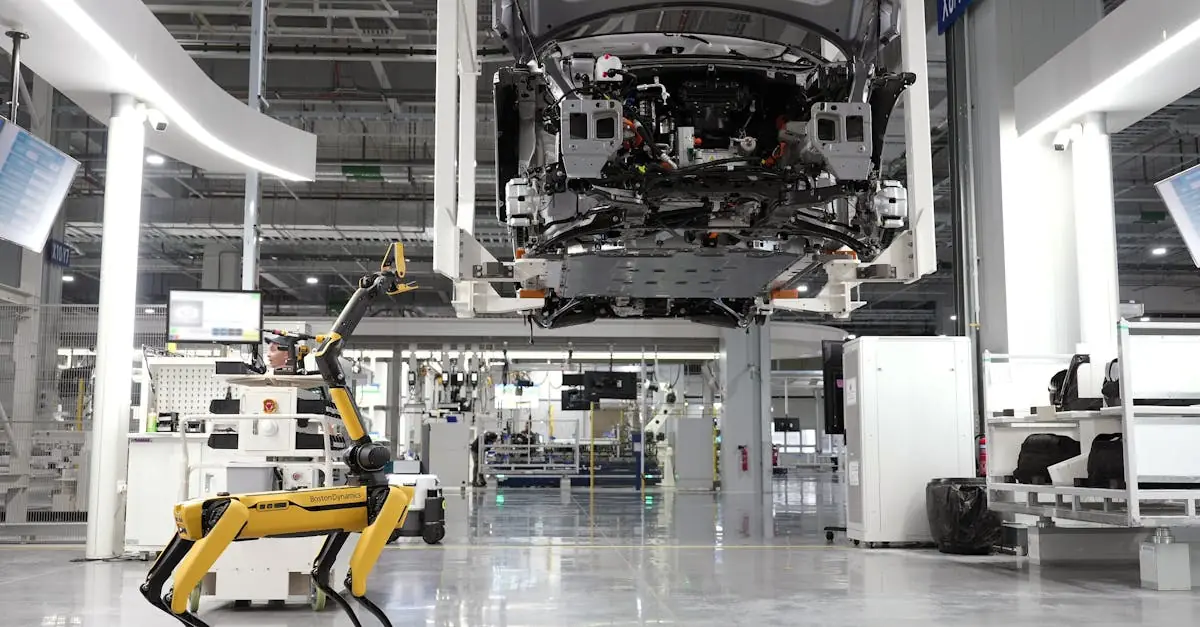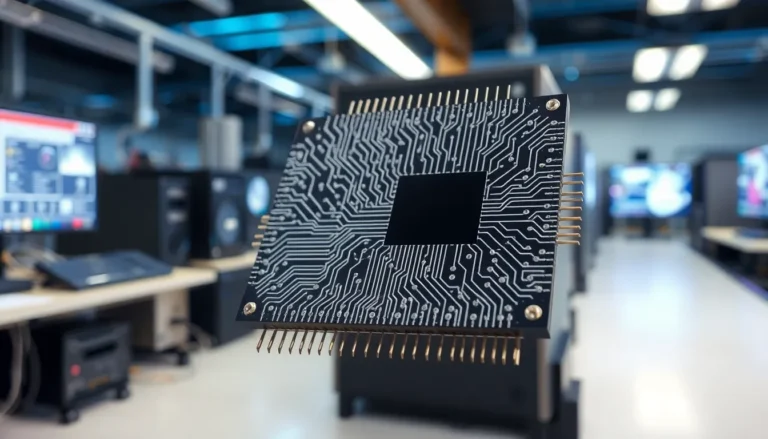The manufacturing industry is getting a high-tech makeover, and it’s all thanks to the Internet of Things (IoT). Imagine a factory where machines chat with each other like old friends, sharing updates and keeping everything running smoothly. Sounds like a sci-fi movie, right? But this is reality, and it’s transforming how products are made and delivered.
Table of Contents
ToggleOverview of IoT in Manufacturing Industry
IoT integration in manufacturing enhances operational efficiency and drives innovation. Connected devices allow real-time data collection and analysis, improving decision-making processes. Increased automation reduces human intervention, thus minimizing errors and increasing productivity.
Sensors monitor equipment health, providing insights that prevent downtime and extend machinery lifespan. Smart supply chains leverage IoT to optimize inventory management, ensuring timely availability of materials. Data analytics enables predictive maintenance, allowing manufacturers to address potential failures before they impact production.
Collaboration between machines fosters a streamlined production line, which accelerates time-to-market. Remote monitoring and control of manufacturing processes empower managers to respond quickly to disruptions. Cloud computing facilitates efficient data storage and access, enabling seamless communication across different manufacturing sites.
Advanced technologies like artificial intelligence complement IoT, enhancing the analysis of big data generated in factories. These technologies identify trends, enabling manufacturers to adjust strategies in real-time. Safety management improves through IoT applications, ensuring compliance with regulations and reducing workplace accidents.
Overall, IoT transforms the manufacturing landscape by creating smarter factories capable of responding to market demands swiftly. Increased visibility throughout operations provides businesses with a competitive edge. Integration of IoT in manufacturing paves the way for a more agile, responsive, and efficient industry.
Benefits of IoT in Manufacturing Industry
The integration of IoT in the manufacturing sector offers numerous advantages that enhance productivity and efficiency.
Enhanced Operational Efficiency
Increased automation forms the backbone of enhanced operational efficiency. Machines communicate seamlessly, enabling real-time data exchange that improves decision-making. Equipment health is monitored through sensors, allowing for predictive maintenance that addresses potential failures before they occur. This proactive approach minimizes downtime, ultimately boosting overall productivity. Automation systems streamline processes, reducing human error and increasing throughput. With data analytics, manufacturers optimize workflow dynamically, swiftly adapting to changing market demands.
Improved Supply Chain Management
Smart supply chains leverage IoT technology for improved inventory management. Real-time tracking of materials ensures timely availability without overstocking. Automated alerts notify personnel of low inventory levels, enabling timely reordering. Active monitoring of shipments throughout the logistics process enhances transparency and reduces delays. This level of visibility strengthens collaboration with suppliers, fostering trust and efficiency. In addition, data-driven insights guide better demand forecasting, reducing waste and increasing overall profitability.
Challenges of Implementing IoT
Implementing IoT in the manufacturing industry faces several significant challenges. These obstacles hinder optimal adoption and operational efficiency.
Security Concerns
Manufacturers must address pressing security concerns when deploying IoT solutions. Data breaches expose sensitive information, risking intellectual property and operational integrity. Cyberattacks on connected devices can lead to production disruptions, losses in revenue, and harm to reputation. Effective security measures, including encryption and secure access controls, protect networks. Regular audits and updates also mitigate vulnerabilities, ensuring systems remain resilient against threats.
Integration with Existing Systems
Integrating IoT with existing systems presents notable difficulties for manufacturers. Legacy equipment may lack the compatibility required for IoT implementation. Manufacturers often face the challenges of high costs and technical complexities during the integration process. Ensuring seamless data flow between new IoT devices and traditional machinery requires robust planning and execution. Successful integration strengthens overall production efficiency, allowing manufacturers to harness the full potential of IoT technologies.
Future Trends in IoT for Manufacturing
The future of IoT in manufacturing promises to drive innovation and operational excellence. Key trends are emerging, positioning the industry for greater efficiency and productivity.
Smart Factories
Smart factories utilize IoT technologies to create interconnected systems that streamline operations. Sensors gather data from machines, enabling real-time communication and automated adjustments. Digital twins simulate physical assets, allowing manufacturers to optimize design and production processes. With enhanced visibility into operations, companies respond to market demands swiftly. Collaborative robots, or cobots, work alongside human operators, increasing safety and operational efficiency. Data-driven insights support better decision-making, leading to continuous improvement efforts across the manufacturing floor.
Predictive Maintenance
Predictive maintenance leverages IoT data to anticipate equipment failures before they occur. By analyzing machine performance and trends, manufacturers reduce unplanned downtime and extend asset life. Sensors monitor crucial parameters, identifying anomalies that require attention. This proactive approach ensures timely actions, minimizing disruption in production schedules. Cost savings result from addressing issues early rather than after equipment breakdowns. Manufacturers increasingly adopt predictive maintenance strategies to enhance reliability and efficiency in their operations.
The integration of IoT in the manufacturing industry marks a pivotal shift towards smarter and more efficient operations. By leveraging real-time data and automation, manufacturers can enhance productivity while minimizing downtime and errors. The rise of smart factories signifies a future where machines collaborate seamlessly, responding swiftly to market demands.
Despite the challenges of security and integration, the benefits of IoT are undeniable. As manufacturers adopt advanced technologies like predictive maintenance and digital twins, they position themselves for long-term success. Embracing these innovations not only strengthens operational capabilities but also fosters a culture of continuous improvement, ensuring that the manufacturing sector remains competitive and resilient in an ever-evolving landscape.




